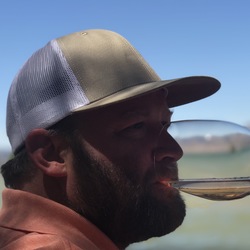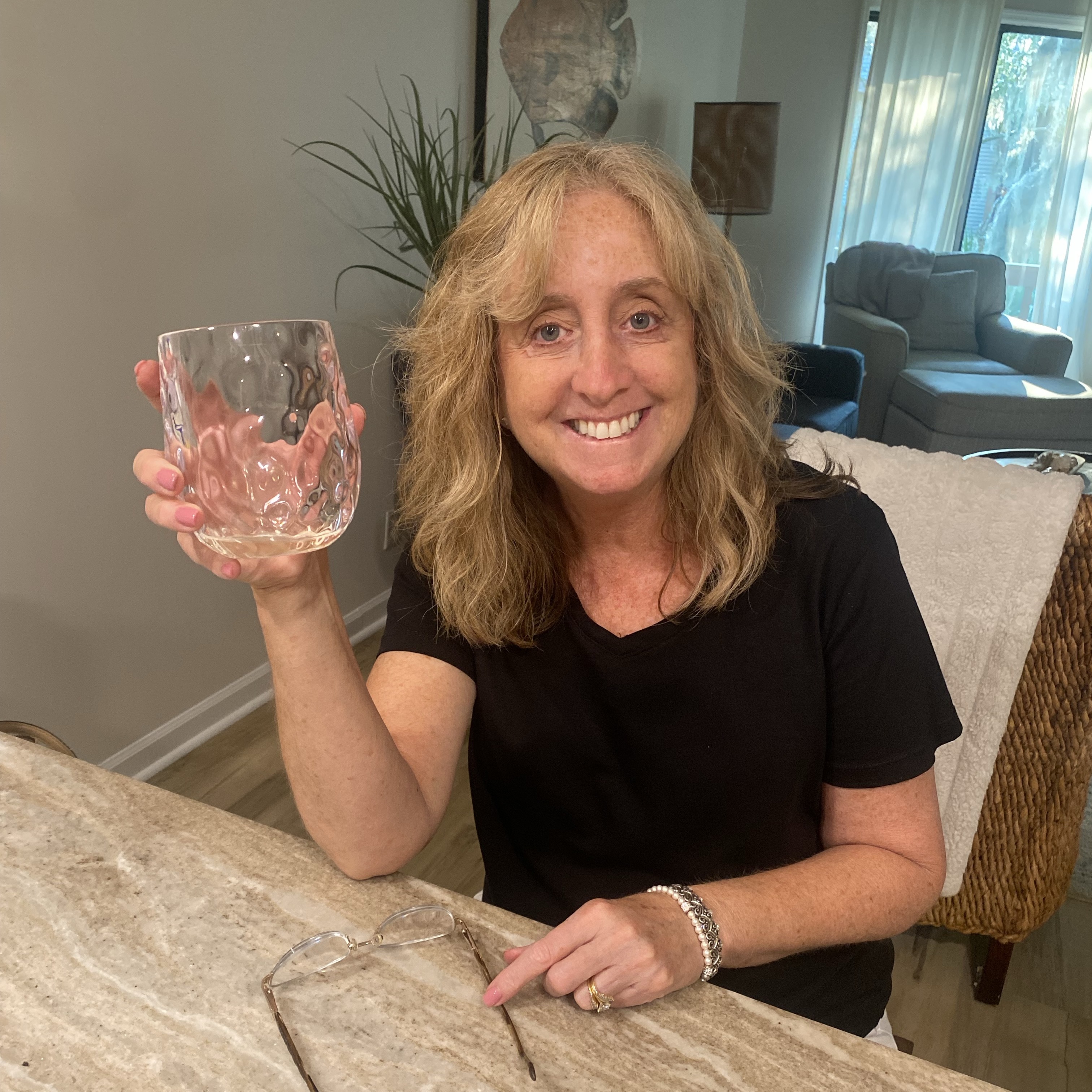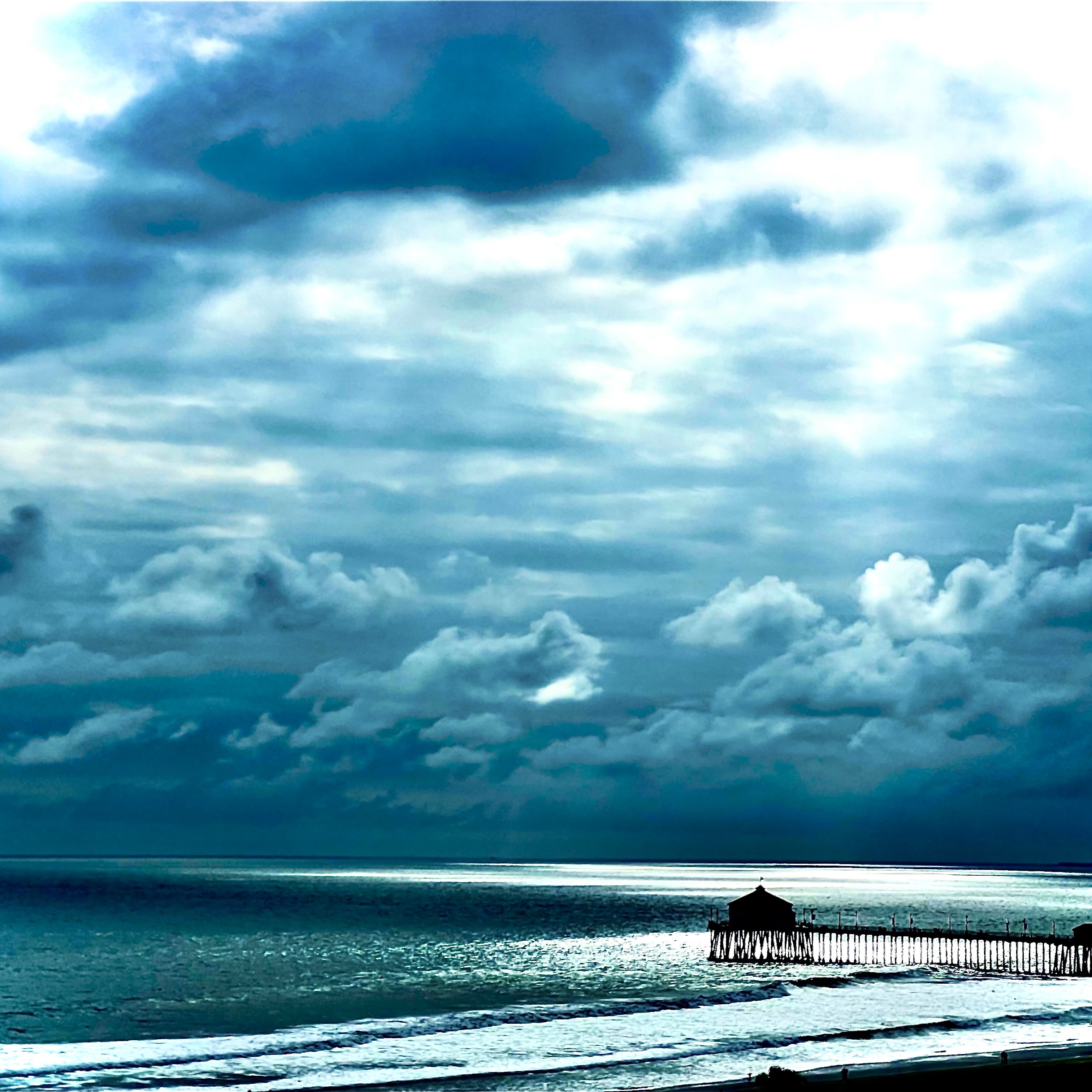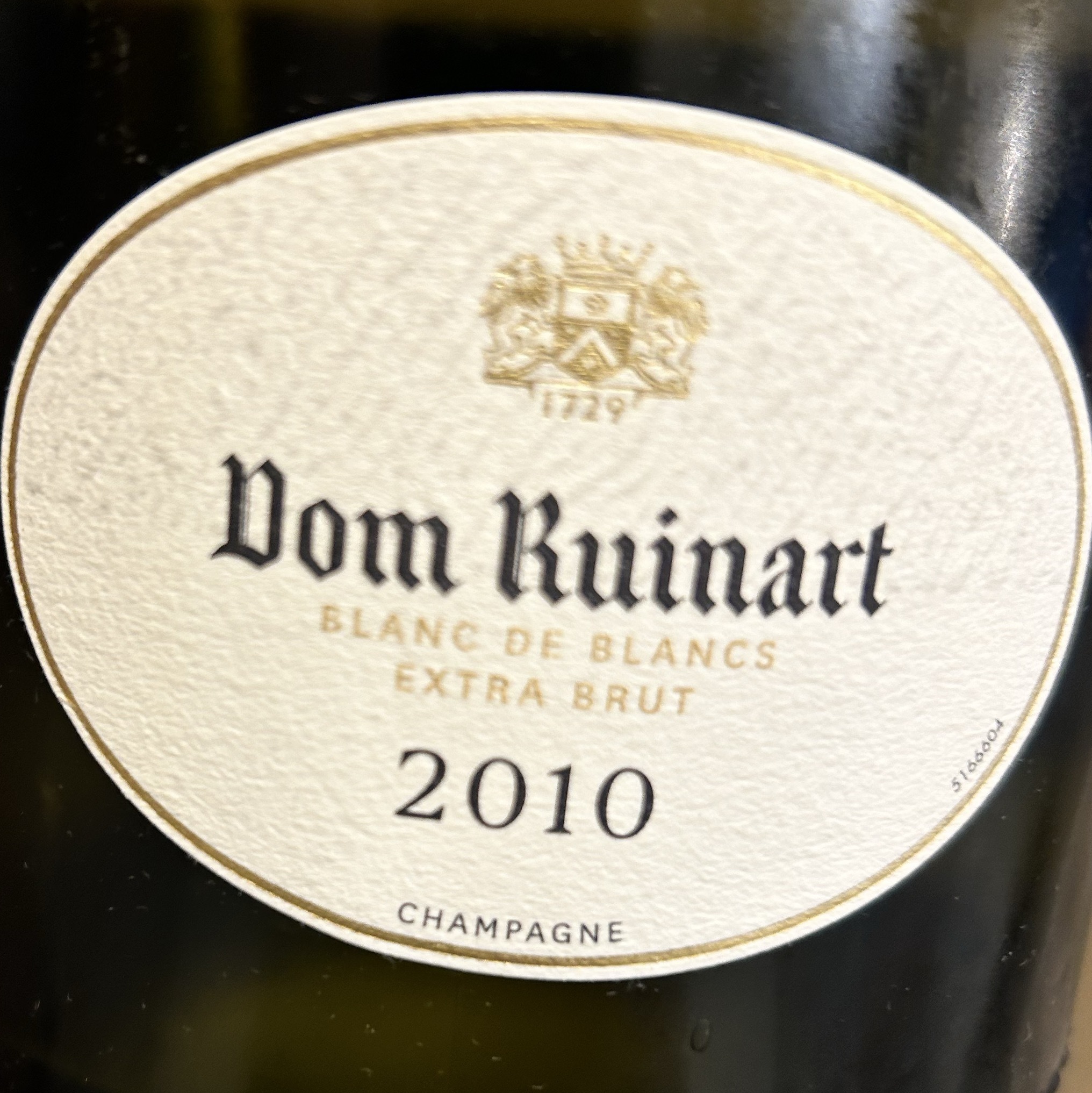Pressing Matters
Kongsgaard
Napa Valley Chardonnay 2014
I should first say that I like Ca Chardonnay but, it’s not the love it once was for me. After I started down the path of drinking good Burgundy, my affection & palate shifted.
I’ve had Kongsgaard Chardonnay here & there. I know this producer is well regarded and therefore pricey. However, my palate is having a bit of difficulty with this bottle tonight.
When I first put nose in the glass, I get more alcohol vapors than I want on a nose. Then, a very strong rigid structure & backbone of white spice, gritty minerals & heat. Followed by lots of, butter/buttered popcorn, green apple, overripe pineapple, lemon with peel, lime zest, peach, soft caramel notes, spearmint, honeycomb, vanilla, sulphur, limestone chalkiness, dry rock & stone pebble mix with yellow flowers/lilies, spring flowers in mixed greens.
The body is rich, lush, round & somewhat waxy. The structure is just too abrasive for my taste. I like beauty & elegance with no astringencies. I guess this is why I’ve learned to drink White Burgundy primarily over Ca Chardonnay. I am more & more so over high alcohol palate burning Ca Chardonnays. Green apple is the primary fruit followed by; overripe pineapple, lime zest, waxy lemons, grapefruit with pith, white peach, touch of tangerine, mango & some green melon. Lots of white spice, honeycomb, grey, gritty volcanic minerals, limestone chalkiness, mix of dry rocks & stone pebbles, sulfur, spearmint, caramel notes, vanilla, butterscotch with yellow florals/lilies, jasmine, fruit blossoms with mixed greens. The acidity is round and lively. The long, firm structured finish is rich, polished and ends in a persistent alcohol burn.
Next time you open a bottle have a sip and sense what’s on your palate. Ask yourself, does it burn? In Sommelier technical thoughts, alcohol burn is considered to be a flaw in wine.
From 375ml
Photos of; John Kongsgaard in front of his winery, Judge Vineyard, Chardonnay grapes ready for pressing and their barrel cellar. — 6 years ago
Domaine Léonine
Amédée Syrah
Light prickly cranberries with soft tannins. No manual pressing, only gravity utilized. — 7 years ago
Krug
Brut Rosé Champagne Blend
There are certain occasions that call for Krug Rosé. So, HBTM! The bottle was corked in the summer of 2014. It’s a blend of 45 reserve wines with the oldest being from 2007 and the youngest 2002. This is why I think Champagne Makers are some of the most talented people making wine. They are constantly blending up to 100 plus wines to bring that bottle to bottle and year to year branded flavor of consistency. On the nose; red & pink spring flowers, cherries, strawberries, watermelon, black cherry, black raspberries, notes of blood orange citrus, baked bread, soft volcanic mineral and elegant chalkiness. The palate is always ridiculously delicate. Micro bubbles, silky rich texture with beautiful soft acidity. The palate fruits are similar to the nose; rich & ripe cherries, strawberries watermelon, black cherry, black raspberries, notes of blood orange citrus with hints of marmalade. Red & pink spring flowers, baguette crust, soft powdery minerals that give the palate a slight sting and super powdery chalkiness done just right. The finish is beautifully rich, textured, revealing itself in layers and lasts minutes. Photos of; Founder Joseph Krug, House of Krug, Winemaker Eric Lebel, Krug’s Clos du Mesnil, a small plot of 1.85 hectares of Chardonnay...one of the world’s greatest vineyards and their salon tasting room. Producer history & notes...Krug was founded by Joseph Krug in 1853. They are based in Reims, the main city in France’s Champagne region. It is one of the famous Champagne houses that formed part of the Grande Marques. Today the house is majority owned by the multinational conglomerate LVMH, which owns Moët Hennessy, Louis Vuitton S.A. and who’s wine producer portfolio includes other well known wine brands such as; Moët & Chandon, Veuve Clicquot, Château d'Yquem, Ruinart & Cheval Blanc, Dom Perignon and many others. Despite LVMH's majority ownership, the family is still actively involved in all the key decisions of the house but does not manage the day-to-day operations. Joseph Krug was born Johann-Joseph Krug, a butcher’s son, in Mainz, on the Rhine in 1800 when the city was part of the Napoleonic Empire. Having dispensed with the name Johann, he left Mainz in 1824 and in 1834 moved on to Paris. Germans were in demand in France as accountants and bookkeepers. So, Joseph joined Champagne Jacquesson in Châlons-sur-Marne. He spent eight years with Jacquesson. His work took him beyond accountancy. He went around Europe testing the market and assessing criticism from wine sellers and customers. He learned about composition and taste so that by 1840 he already seemed to have been blending Champagne for at least one other house. In 1841, he married Emma-Anne Jaunay. The daughter of a French hotelier based in London’s Leicester Square. The following year their son Paul Krug was born. In 1842 he moved to Reims and following a year later, Krug et Cie was founded with his partner, Hyppolite de Vivès. Joseph was fluent in French, English and German and even spoke some Russian, putting the company in position to exploit key overseas markets. Joseph died in 1866 and was succeeded by his son Paul Krug, who had been trained by his father to takeover. Joseph under the supervision of Paul, Krug was established as a Grande Marque. By the 1880s the prestige of Krug was acknowledged in the United Kingdom and became the primary overseas market for Champagne. In 1866, the House moved into Rue Coquebert, in Reims as it remains. After Paul’s death in 1910, he was succeeded by his son, Joseph Krug II. However, during World War I Joseph II was taken prisoner and his wife Jeanne played a key role in the House at a time when the Western Front divided the region between the Allies and the Germans. After the war, Joseph II’s slow recovery led to his nephew Jean Seydoux becoming joint manager in 1924. In that decade, the Krug 1926 and 1928 vintages were created, which have been considered by critics to be amongst the greatest Champagnes. Lawyer and wine writer Maurice Healey declared “Krug” the king of all Champagnes. Further, “that the 1928 Krug was the best wine made in the present century.” By the mid-1930s, Paul Krug II, the son of Joseph II, was active in the business and would become head of the House from 1959 to 1977. His father died in 1967, by which time he was, according to Patrick Forbes, “one of the most popular and respected figures in the Champagne district.” In 1962 Henri Krug, the son of Paul II, joined the management, as did his brother Remi three years later. Their arrival was followed by a series of innovations, including extensions in the range of Champagnes. In 1979, for the first time, a graduate winemaker joined the House. In January 1999, the House became part of LVMH and by 2007, the brothers, while remaining on the tasting committee, had stepped down from day-to-day responsibilities. In 2009 Olivier Krug, the son of Henri, became House Director. At harvest, Krug grapes are pressed close to their plots with the first juice kept for 24 hours in a vat prepared for the fermentation stage. The pressing from each plot is vinified separately. A pressing contains 4,000 kilos of grapes and yields 20.5 hectolitres of first juice (cuvée), which is poured into twelve oak casks chosen at random. Once fermentation is complete, the eleventh and twelfth casks are used to top up the other ten casks in order to protect the new wines from oxidation. For fifteen days, each cask is topped up with wine from the same plot. Krug uses small 205 liter oak casks tailor-made from trees that are more than two centuries old in the forests of Hautes Futaies in Central France. The average age of Krug oak casks is 20 years. They are retired after approximately 40 years of use. The wines remain in the casks for several weeks. During this period, clarification occurs naturally from the cool temperature of the cellar given the coming winter, as does a micro-oxygenation process from the use of natural containers, making the wine more resistant to oxygen over time. Finally, between December and January, the wine is drawn off into small stainless-steel vats. From here, depending on the decisions of Krug’s tasting committee, the wines will either contribute to that year’s assemblage or be stored in steel vats in the House’s library of 150 reserve wines to be used in the blend of a future Krug Grande Cuvée and or Krug Rosé. — 8 years ago


Mauro Sebaste
Moscato d'Asti
Pale gold with tiny persistent bubbles. Inviting nose and palate of ripe golden apples, ripe peaches, and clover honey. Light and fizzy on the tongue. Sweet (of course) but balanced with refreshing acidity. Short-ish finish, but you’re likely taking another sip before that matters. The gold standard for Moscato. A lovely treat on its own, with fresh fruit, or with lightly sweet dessert crepes. Also a great pair with the exceptionally spicy dishes that my dining partner likes to make (remember, “Sweet beats heat!”). Stop fronting. You know that you like this stuff. Drink now. — 6 years ago
Castel del Piano
Melampo Pinot Nero 2015
Very interesting and unusual pinot. A rustic personality and a good acidity leave room after a while to more aromas and elegance. I must say, the terroir of Lunigiana is full of surprises and it always leaves a strong mark on a wine's character, no matters the varietal. — 6 years ago
Dainero
Toscana Red Blend 2015
Well blended reflection of the richer side of the Tuscan region. I detect some fruit that’s been intensified by drying the grapes in the sun before pressing. A Last Bottle $14 selection... have it with anything! It’ll hold up against Wínes that have a grander heritage any day. — 6 years ago
Nicolis Angelo e figli
Amarone della Valpolicella Classico Corvina Blend 2011
Dark ruby in color with a purplish rim.
Fruity nose of black cherries, plums, blueberries, oak, vanilla, licorice, cloves, herbs, spices, dark chocolates, coffee, peppercorn, earth, light vegetables, pencil lead and peppercorn.
Medium plus in body with medium plus acidity and long legs.
Dry on the palate with cherries, strawberries, red currants, licorice, tobacco, herbs, vegetables, spices, peppercorn, vinaigrette and spices.
Medium finish with fine grained tannins and tangy cranberries.
This is a great Amarone. Not fully balanced, yet enjoyable by itself or with food. Showing nice complexity and a great mouthfeel. Intense, smooth and rich
Needs a few years in the bottle to mature properly. Good right out of the bottle and better as it opens up (2 hours). Died after 4 hour in the decanter, and became too acidic (... but there was not much left anymore😉)
I paired it with light appetizers, cheeses and smoked Meats.
Grapes were dried for 3 months before pressing. Aged for 30 months in Slavonian oak barrels.
A blend of 65% Corvina, 20% Rondinella, 5% Molinara and 10% Croatina.
15% alcohol by volume.
90 points.
$55. — 7 years ago
Marqués de Cáceres
Crianza Rioja Tempranillo Blend 2013
Omigosh still studying the wines that may turn up on my next test. This wine has the tart/sweet cherries and plums. And some leather and dried herbs and almost what I thought was caramel but I am realizing coconut eaters (I hate coconut) might call sweet coconut. And there is a finish of...well now that I’ve been sniffing dried dill for a couple months in able to be able to identify I’d call dill and balsamic in the finish. Would I call it Tempranillo in a blind tasting? Now that I know my good guy dill maybe. That doesn’t matter on Delectable. What matters is this is a moderately priced wine you can easily find that would prove tasty probably especially with a bacon-y (in my veg imagination)/roasted bell pepper/stewed dish. I dunno. This wine is an easy drinker maybe not for the masses but for those of us who dig BIG wines this is an easy and damn tasty wine. I also would try it with a salad with roasted veg and a balsamic dressing. I feel that pairing would do it right. — 8 years ago

Villa I Cipressi
Zebras Brunello di Montalcino Sangiovese 2004
Wife likes it. That's all that matters — 8 years ago
Anakota
Helena Dakota Vineyard Cabernet Sauvignon 2009
(My portfolio) Yes oh yes! This has aged SO well! Nicaraguan tobacco, mocha and black earth. The nose is a bit muted at the moment but it hardly matters when this hits the palate. The tannins are amazingly well integrated and the finish is more than 2 minutes in length.... — 9 years ago
La Follette
Sun Chase Vineyard Chardonnay 2017
Winery notes, Sun Chase Vineyard is planted on the west-facing hillside where the cool Petaluma Gap collides with Sonoma Mountain, this site overlooks a broad sweep of the county from the San Pablo Bay to north Santa Rosa. Our Chardonnay block with an east-west row aspect sits on a sun-drenched, rocky incline at 1000' where fruit yields are naturally limited with small clusters and aromatic fruit. Technical Notes: 76 clone, Whole-cluster pressing, 100% native yeast primary fermentation, 100% wild malolactic fermentation, 11 months in low toast, air-dry 3-year-old French oak, 25% new."
My notes , Aubert style without Aubert price. — 6 years ago


Winderlea Vineyard and Winery
Shea Vineyard Pinot Noir 2016
Consumed to early. Left a pour in a glass for several hours and it opened up. Cherry, spice, roses. Wife likes and that’s what matters. Need more to lay down. — 6 years ago
Val do Sosego
Rías Baixas Albariño
Slightly sweet went well with chicken tender salads on 7.04.19. 2016 vintage if that really matters here.... — 6 years ago
Greywacke
Wild Sauvignon Marlborough Sauvignon Blanc 2011
90° at 7pm calls for more Marlborough Sauvignon Blanc.
.
Cloudy Bay was founded in 1985 by David Hohnen of Margaret River’s Cape Mentelle along with its first winemaker, Kevin Judd, who would go on to spend 25 years there before creating his own label, Greywacke. Judd is widely considered as the pioneer responsible for elevating New Zealand wine to its current status. Judd also happens to be one of the best wine photographers in the world (I highly recommend his ‘The Landscape of New Zealand Wine’).
.
According to Master of Wine Bob Campbell “the genesis for Greywacke Wild Sauvignon was Cloudy Bay Te Koko; a funky, barrel-fermented sauvignon blanc that bent all the rules when it was made in 1992 and initially sold only through the cellar door. Greywacke Wild Sauvignon is a blend from 10 different Marlborough vineyards which are machine-harvested at night. After pressing the juice is settled before being pumped into mostly old barrels and fermented using indigenous yeasts (about 15-20 different strains). The wine undergoes a partial malolactic fermentation and lees stirring.”
.
Incredible aromatics... an almost vibrant herbaceousness... red bell pepper, grapefruit zest, tangerine, apricot, and cucumber, with a silky smooth mouthfeel unlike most Sauvignon Blancs. Extraordinary. — 8 years ago


Tyler
Santa Barbara County Pinot Noir 2016
Bright red, both in color & taste, tempered by what tastes like some whole cluster pressing. Fun, bright, & a wee bit Of Burgundy — 8 years ago
Le Vigne
AmeRhone An American Rhone Styled WIne 2013
Good word play with this take on the Amerone vinification process and Rhone grape variety in America. Amerhone's Syrah grapes were picked, then allowed to dehydrate for 5 days before destemming, pressing and aging this 1800 bottle production in oak for 22 months. All this lent a nutty, pleasantly raisinated and smooth quality Syrah, with violets, leather, black cherry, rice wine, dried fig and plum notes. — 8 years ago















Shengli Hu
A Soave Classico cru. The vineyards in Casette Foscarin are situated to the north of the Soave Classico area. In calcareous soil of volcanic origin. Multiple passes through the vineyard for picking, soft pressing with low temperature maceration, and aging in barriques and tonneau for 6 months. The signature cherry blossom jumps out of the glass, CHERRY, CHERRY, CHERRY, stony minerality, hefty salinity, mushroom, dried herbs, cherry pith, yellow apricot, and Meyer lemon. Medium+ finish. Elevated acidity. — 5 years ago